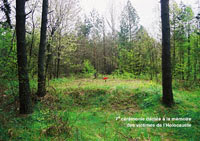O Caso Doca 21 / Comics
Na pesquisa de novas ideias para partilhar com educadores de modo a integrar as ICT nos curriculos.
Desta vez, o Caso Doca 21, uma história imprevisível feita de maneira menos previsível: sem papel, lápis nem borracha, sem folhas rasgadas ou efeitos especiais.
Desta vez, o Caso Doca 21, uma história imprevisível feita de maneira menos previsível: sem papel, lápis nem borracha, sem folhas rasgadas ou efeitos especiais.
Doca 21 é uma banda desenhada criada apenas com um Samsung Galaxy Note 3.
O ilustrador é português, Ricardo Cabral e, a pedido da Samsung Portugal, deu largas à sua criatividade através dos recursos deste smartphone e da caneta S-Pen.
O ilustrador é português, Ricardo Cabral e, a pedido da Samsung Portugal, deu largas à sua criatividade através dos recursos deste smartphone e da caneta S-Pen.
O criativo aceitou o desadio. A multinacional pretendia provar as muitas possibilidades da S-Pen de modo a cativar ilustradores profissionais.
As personagens e cenários foram inspirados em paisagens e pessoas reais, num "casting" espontâneo feito nas ruas de Lisboa.
E assim nasceu a app O Caso da Doca 21.
As personagens e cenários foram inspirados em paisagens e pessoas reais, num "casting" espontâneo feito nas ruas de Lisboa.
E assim nasceu a app O Caso da Doca 21.
O Caso Doca 21
"Tudo começa com um pombo que vai contra uma janela. Essa janela pertence à casa de uma jovem repórter fotográfica, Bárbara. É um pombo correio e traz uma mensagem estranha, e para ela, uma mensagem estranha desperta o olho jornalístico e obriga a meter o nariz.
Barbara / O Caso da Doca 21
Bárbara e um amigo decidem entrar no meio destas mensagens e começam a seguir um trilho que os leva ao lado obscuro das obras de arte.
Misteriosamente, dois velhotes estão envolvidos e tornam tudo mais indecifrável.
Não só na arte como no desenrolar da história, decifrar é precisamente o que vão ter de fazer e que os vai levar a conclusões inesperadas.
Caso Doca 21 conta a hstória de uma jovem repórter fotográfica, Bárbara, que tentar decifrar o lado obscuro das obras de arte. A Bárbara juntam-se outras personagens: Sebastião, o senhor Matias, a senhora Camila, e o agente Mendonça.
Educação:
Este projecto criativo apoiado nas tecnlogias pode transformar-se num excelente recurso educativo digital.
Curriculos: Artes; Artes Gráficas; Desenho; Línguas.
Níveis : Ensino Vocacional ; Ensino Secundário ; Ensino Básico (3º ciclo)
No curriculo de Línguas poderã esta história de mistério servir de motivação ao estudo do Texto Narrativo através de uma publicidade que se transformou numa curta história de mistério.
Educação:
Este projecto criativo apoiado nas tecnlogias pode transformar-se num excelente recurso educativo digital.
Curriculos: Artes; Artes Gráficas; Desenho; Línguas.
Níveis : Ensino Vocacional ; Ensino Secundário ; Ensino Básico (3º ciclo)
No curriculo de Línguas poderã esta história de mistério servir de motivação ao estudo do Texto Narrativo através de uma publicidade que se transformou numa curta história de mistério.
Caso Doca 21 - a Comics story 100% created only with a Samsung Galaxy Note 3 and with the illustrator Ricardo Cabral talent.
As usual readers know, I am always searching for new ideas and integrate them in different resources as educational.
Yesterday, I found this comic story on a tech review and visiting the Facebook page to complete the information, I thought it would be interesting to share my idea with you.
Caso Doca 21 is a comic story created by a talented Portuguese illustrator with a Samsung Galaxy 3 and the S-Pen.
Samsung Portugal asked Ricardo Cabral to use the S-Pen of the Galaxy 3 to advertise the possibilities of this mobile phone to other professional illustrators.
The characters and environments were inspired by real people and real landscapes: spontaneous "casting" done on the street of Lisbon (Portugal).
Characters: Barbara, Sebastião, Sr. Matias, Sra. Camila and agente Mendonça.
The comic tells the story of a young photojournalist - Barbara - who tries to decipher the dark side of the artwork.
To join Barbara there are other characters: Sebastian, Mr. Matias, a Portuguese lady Camila and the humorist, Nuno Markl, who assumes the role of 'Agent Mendonca'.
Check the BD on Samsung Portugal Facebook
Education:
This provocative advertising can be very inspirational in Education and ICT enhance learning. The students will be invited to create new projects using their devices.
Curricula: Arts; Graphic; Design; Languages,
Levels: Vocational education; Secondary education ; Middle schools.
In Languages curriculum this comic story could introduce the Narrative. Students must use tablets or smartphones.
"The technology you use impress no one.
The experience you create with it is everything."
Sean Gerety
The experience you create with it is everything."
Sean Gerety
G-Souto
30.01.2014
Copyright © 2014G-Souto'sBlog, gsouto-digitalteacher.blogspot.com®

30.01.2014
Copyright © 2014G-Souto'sBlog, gsouto-digitalteacher.blogspot.com®
Comics in Education by G-Souto is licensed under a Creative Commons Attribution-NonCommercial-ShareAlike 3.0 Unported License.












/media/movies/covers/2014/03/a-menina-que-roubava-livros_t53265_1.jpg)




